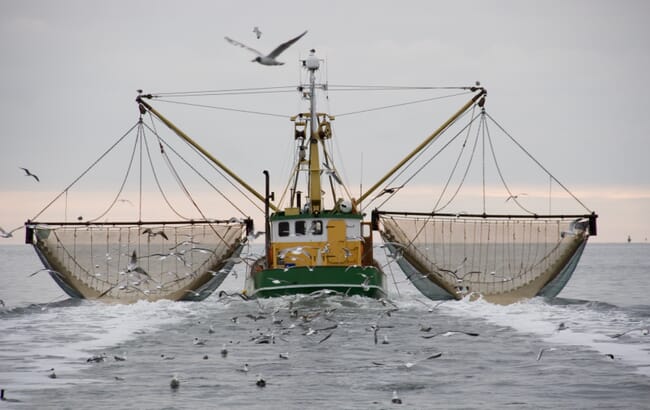An international collaboration of scientists conducted a global meta-analysis of 70 comparative and experimental studies on the effects of bottom trawling, to estimate the rates of depletion and recovery of seabed biota following bottom trawling. The researchers were able to quantify the relationship between the reduction of seabed animals and penetration of the fishing equipment into the seabed.

Lead author Professor Jan Hiddink from Bangor University, said: “We found that otter trawls penetrated the seabed 2.4 cm on average and caused the least amount of depletion of marine organisms, removing 6% of biota per trawl pass on the seabed. In contrast, we found that hydraulic dredges penetrated the seabed 16.1 cm on average and caused the greatest depletion, removing 41% of the biota per fishing pass.”
Depending on the type of fishing gear, penetration depth, and environmental variables such as water depth and sediment composition, recovery times for seabed biota ranged between 1.9 and 6.4 years.
Trawling contributes 20% of the global landings of fish caught at sea, hence it is an essential means of providing food for millions of people.
Bottom trawling is used to catch fish and shellfish that live in or near the seabed. Despite its importance, it causes variable amounts of physical and biological change to seabed habitats, and can induce structural and functional changes in seabed communities. Understanding the ecosystem consequences of trawling is important so that we can reduce negative impacts on the seabed through appropriate management measures.
Professor Ray Hilborn of the University of Washington, Seattle who led the collaboration with Professors Michel Kaiser (Bangor) and Simon Jennings (International Council for the Exploration of the Seas, Denmark), said: “These findings fill an essential science gap that will inform policy and management strategies for sustainable fishing practices by enabling us to evaluate the trade-off between fish production for food and the environmental cost of different harvesting techniques.
“We need to view these results in light of the footprint of each of these activities; while otter trawling has the least impact per trawl pass, it is the most widely used of all the bottom fishing gear types and hence its effects are more wide-spread than are those of more specialised fishing gears such as hydraulic dredges.”
Prof Kaiser added: “Retailers and seafood processors are particularly concerned about the public perception of bottom trawling, hence this research has made a crucial advance in enabling us to understand what might be considered acceptable amounts of trawling activity in different seabed habitats, and to adjust these to sustainable levels when necessary.”
Dr David Agnew, Science and Standards Director at the Marine Stewardship Council said: “This research has significantly advanced our understanding of how to measure the impact of trawl fisheries on the seafloor. I look forward to these results being used in our future research project with Bangor University and more broadly to assist fisheries as they work to meet the Marine Stewardship Council’s standard for sustainable fishing.”
The full paper, Depletion and recovery of seabed biota following bottom trawling disturbance, can be viewed here.

